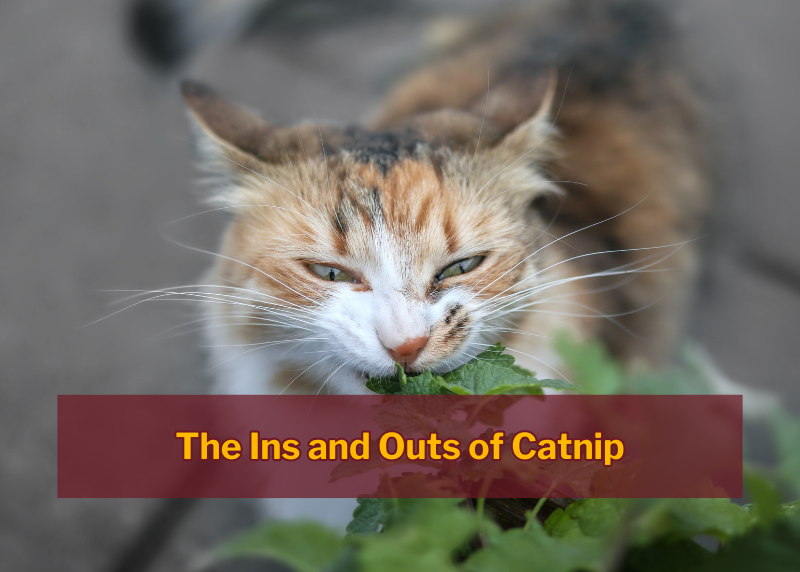Disclosure: Some articles on this site may contain affiliate links, meaning, at non additional cost to you, Chicago Urban Pets may earn a commission if you click through and make a purchase. As an Amazon Associate we earn from qualifying purchases.
Written By: Briseis Schreibman, Edited by Abbi Colborn
Have you ever watched a cat interact with catnip? It’s quite fascinating. My cat enjoys catnip sprinkled on her scratching posts, or scattered on the floor. Sometimes zoomies ensue, sometimes she’s rolling around on the floor. Why are cats drawn to this specific plant? Is it innate, instinctual knowledge, or individual curiosity? In this article, we break down the basics of catnip and why cats love it.

What Is Catnip?
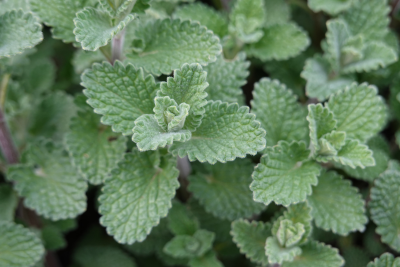
Nepeta cataria, commonly known as catnip, catmint, or catwort, is one of the approximate 250 species in the mint family and has a leafy green appearance. It can grow pretty much anywhere. Like it’s minty cousin, humans use catnip for centuries to make teas, herbal cigarettes, and even cooking seasoning. Nowadays, cats have edged out humans as the top catnip consumer.
You Might Also Be Interested In:
- First Time Cat Owner’s Guide
- How To Properly Handle Your Cat’s Food
- 3 Things All Cats Do (Even If You Don’t Know Why)
Why are cats obsessed?
Like a lot of plants, catnip produces chemicals as a defense mechanism against pests. Nepetalactone, a compound naturally produced in Catnip, is the active ingredient that cats love. It’s a mild hallucinogenic (that is nonaddictive and completely cat-friendly).
Cats enjoy rolling in catnip not just because of the euphoria they get from it, but also as an evolutionary protective measure. Catnip produces a powerful mosquito repellant, Nepetalactone, the very essence that gives cats pleasure also deters pests. By rolling in it, the cat covers itself in an all natural mosquito repellant.
Effects on Cats
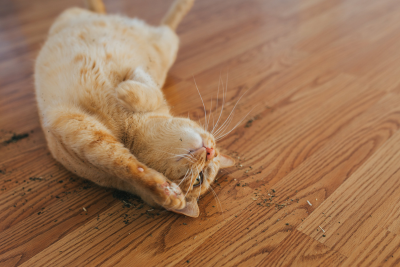
The Humane Society has a great description of what your cat experiences while affected by Catnip:
“The most intense catnip experience starts with the nose—one whiff of the stuff and your cat promptly goes nuts. Researchers suspect that catnip targets feline “happy” receptors in the brain. When eaten, however, Catnip tends to have the opposite effect, and your cat mellows out,” (The Humane Society)
Cats experience brief rush euphoria from sniffing and rolling in catnip. This accounts for the behavior changes, which usually include zoomies, rolling, and a general uptick in silliness from your cat. After about 10 minutes, the receptors in your cat’s brain can no longer make the happy chemicals in response to the ‘nip, causing the kitty to lose interest.
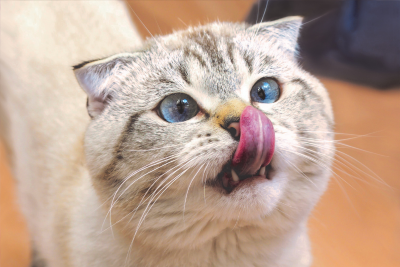
Looking For Cat Sitting Services In The Chicago Area?
SIGN UP FOR PURRRRRR QUALITY CAT CARE TODAY!
Sensitivity
Sensitivity to catnip is hereditary, and is only present in cats over six months of age. About 1/3 of cats have no response to catnip. Of those who do respond to it, each individual reaction to catnip will vary. Some cats do not have a good reaction to catnip at all, they get hyperactive or aggressive. Some cats will become cuddle monsters, and others turn into marathon runners.
If you discover your cat and catnip don’t get along, never fear. There are several plants with similar properties! The most effective is silvervine, a plant that produces a chemical similar to Nepetalactone (the psychoactive ingredient in catnip). This study compares responses in domestic cats interacting with catnip, silvervine, and other plants that interact with cat’s opioid receptors.
Now that you have a better understanding of how catnip affects your kitty, you may be wondering how to best incorporate the plant into your pet’s life.
Forms of Consumption
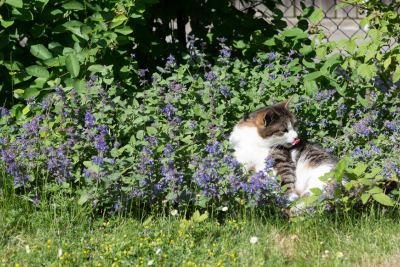
First up, consider what form you want to purchase the plant in. Catnip can be purchased as a spray of essential oils and distilled water, an herb-like mixture of dried leaves and flowers, pellets of dried leaves and flower buds, and as catnip-filled cat toys or dental chews.
Whatever your preferred form, always make sure the product is fresh and stored in an airtight container in the freezer to extend shelf life. You can also choose to grow your own Catnip as it is a simple herb that can flourish indoors and outdoors.
Finally, determine its best use
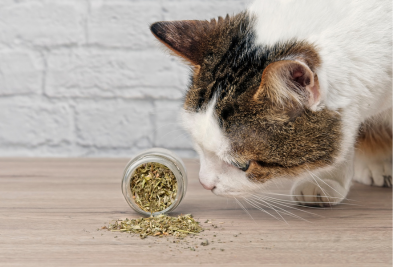
Theres a time and place for everything. As with any psychoactive substance, environment and timing will affect the effects. Here are of some of the most popular suggested uses of catnip:
- Rub it into your cat’s scratching post to encourage use
- Buy toys containing catnip to promote active play and exercise
- Sprinkle in a new environment to encourage exploration for shy cats
If you find this post helpful, and decide to introduce Catnip to your kitty, make sure to snap some photos during the fun and share them with us on Instagram!

Ultimate Cat Care Checklist Before you Go


